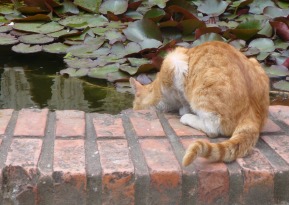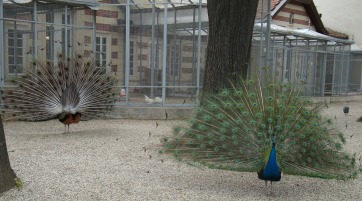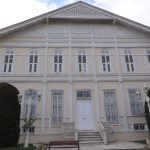“Filled-in garden”
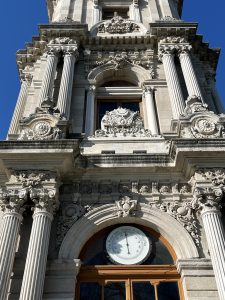
North of Kabataş the Bosphorus suburb of Dolmabahçe is best known for the huge and spectacular palace built to house the later Ottoman sultans when they decided to abandon Old İstanbul and the Topkapı Palace in favour of basing themselves on the more westernised side of the strait. The palace was actually built on reclaimed land – in Turkish “dolmabahçe” means “filled-in garden” in a nod of recognition to that fact.
Aside from the palace you might also want to take a look at the elegant Dolmbahçe Cami just outside its gates whose prayer services would have been attended by the later sultans on a regular basis.
Across the road on a traffic-blighted corner opposite the Beşiktaş football stadium is an elaborate sebil or public water dispensary.
Turkey’s much revered first president, Mustafa Kemal Atatürk (1881-1938), died in the Dolmabahçe Palace which is why the wall on the inland side of the coast road is lined to this day with photographs of him.
Dolmabahçe Palace
The elaborate Dolmabahçe Palace (closed Mondays, admission TL1,500) that became home to the later Ottoman sultans was the handiwork of the Armenian architect Garabet Amira Balyan (1800-66) and his son Nikoğos. Built for Sultan Abdülmecid, it was such a mammoth undertaking that it took from 1843 to 1856 to complete.
The palace contains a daunting 258 rooms, although the public only get to see a tiny fraction of them, most attention focusing on the stupendous 38-metre-high Ceremonial Hall with its concealed dome where the later sultans presided over festivities to celebrate the different bayrams (holidays), and on the considerably smaller room in which Atatürk breathed his last on Nov. 10, 1938 – all the clocks in the palace are stopped at the precise moment.
It’s a sign of what a grip the Balyans had on court architecture at the time that the wooden Beşiktaş Palace that had stood on the site before the Dolmabahçe had itself been a work of Garabet’s older brother Krikor.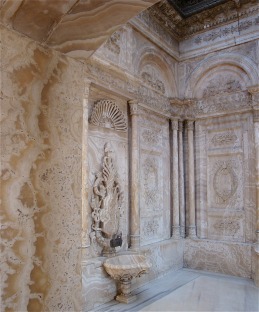 Sultans’ alabaster hamam
Sultans’ alabaster hamam
The palace houses one of the city’s largest art collections, including a set of images by the Italian court painter Fausto Zonaro (1854-1929) that portray Sultan Mehmed II conquering Constantinople. There are also many paintings by the last caliph, Abdülmecid Efendi, who was an accomplished artist. One of the most impressive artworks is The Sürre Procession, a huge canvas by the Italian artist Stefano Ussi (1822-1901) depicting the camel train that set off annually to take gifts of gold from the sultan/caliph to Mecca and Medina.
How much you will enjoy a visit to Dolmabahçe Palace probably depends on your tolerance for OTT decor. Forget minimalism – everything here is painted, lacquered or gilded although much of it looks as if it could do with a good dust.
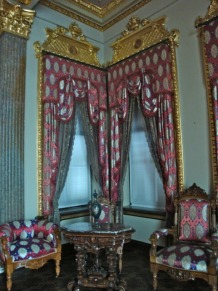 Çamlı KöşküPersonally, I struggle with Dolmabahçe. My favourite bit is probably the small Çamlı Köşkü (Glass Pavilion) mounted on the wall in the garden which seems more cohesive in its design than much of the interior of the palace. In 2024 it was closed to the public.
Çamlı KöşküPersonally, I struggle with Dolmabahçe. My favourite bit is probably the small Çamlı Köşkü (Glass Pavilion) mounted on the wall in the garden which seems more cohesive in its design than much of the interior of the palace. In 2024 it was closed to the public.
The palace grounds are inviting not just because of the Bosphorus views from the sultans’ landing stage at the front but also for the floral displays in spring and summer. Don’t miss the Kuşluk (Aviary) at the back with its peacocks.
Approaching the entrance to the palace you pass an elegant 27-metre-high clocktower (saat kule) that was designed by Sarkis Balyan for Sultan Abdülhamid II in the 1890s. It was not the city’s first clocktower, an honour that goes to the smaller version that is now the centrepiece of a square between the İstanbul Modern and the Nusretiye Cami in the Galataport development However, visitors may be interested to note the clock-faces which retain their original Arabic numerals. Two thermometers and two barometers were incorporated into the design lower down.
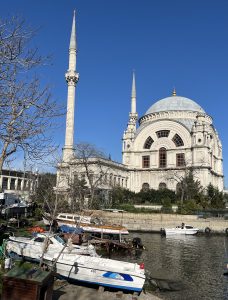 Around Dolmabahçe
Around Dolmabahçe
If you walk to the palace from the Kabataş tram stop you will pass the stately Dolmabahçe Cami right beside the water. Garabet Balyan designed it for Bezmialem Valide Sultan, the mother of Sultan Abdülmecid, but she died before seeing its completion in 1855. Although it never had one of the large complexes associated with the early imperial mosques, it did have a courtyard that would have given it a more regal approach. This was lost in the 1950s to road widening.
Although the mosque retains the dome and twin minarets of earlier mosques a break from tradition came in the form of the huge arched windows designed to let in much more light than had hitherto been the case.
For many years the mosque acted as a temporary home for the Deniz Müzesi. There’s still a small fishing harbour beside it.
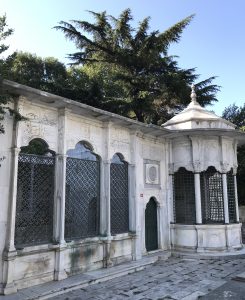
Across the road from the mosque just beside the busy junction with the road heading up to Taksim and opposite the football stadium is the elaborate Hacı Mehmed Emin Ağa complex (1741) which incorporates a sebil (a staffed water/şerbet dispensary) alongside the tombs of the founder and his family and was moved here after road-widening in the 1950s. Around the corner steps lead up to Gümüşsuyu Caddesi and thence to Taksim Square.
Across the road from the palace entrance is the enormous Vodafone Park (BJK İnönü) Stadium, the home ground of the Beşiktaş football team. Much hymned for its view of two continents, it was originally designed in 1947 by a trio of architects, Vietti Violi, Fazıl Aysu and Şinası Şahingiray, but was extensively remodelled, reopened and renamed in 2013. It has a capacity of about 45,000 seats and on match days traffic chaos and road closures are common.
Transport info
It’s easy to get to Dolmabahçe by tram from Sultanahmet as the Kabataş terminal is less than 10 minutes’ walk away. Alternatively you can get a bus from Taksim or Beşiktaş or a ferry from Kadıköy or Üsküdar. The funicular from Taksim to Kabataş brings you out within spitting distance of the Palace.
Nearby areas
